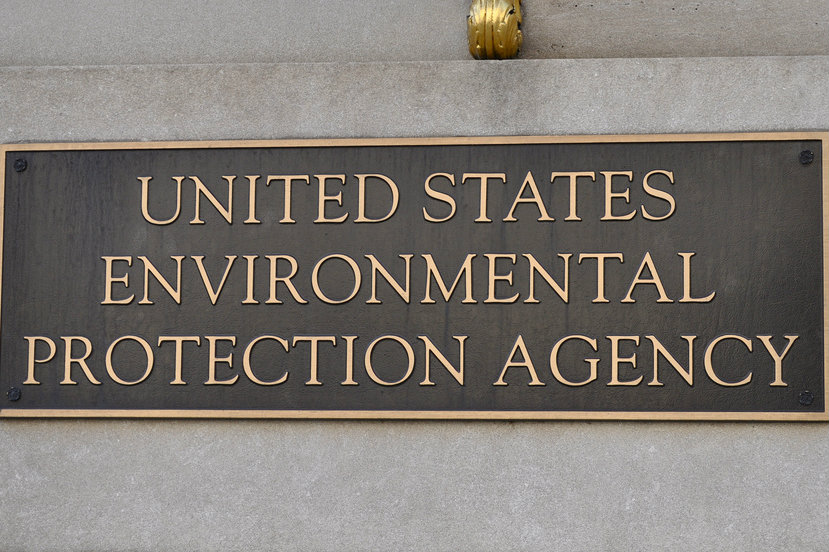If a new mineral-based pool treatment product were the first of its kind not to need classification as a pesticide, then that would be groundbreaking.
A company called Blueray XL is making that very bold claim on the heels of a recent ruling by the U.S. Environmental Protection Agency. Company founder Chris Galvan believes his Blueray XL 4-in-1 Mineral Clarifier is the first copper sulfate pool product to be exempt from federal pesticide regulations.
But a competitor is saying not so fast.
PoolRx Worldwide, Inc. is suing Blueray XL.
PoolRx went to market in 1994. Blueray XL launched in 2013. Both are based in Orange County, Calif. and make similar mineral-based swimming pool treatments that activate once placed in pump skimmer baskets.
The major difference between the products is that PoolRx is classified as an algaecide, which the federal government considers a pesticide, and Blueray XL is a flocculent. As producer of an algaecide, PoolRx has to comply with expensive federal regulations. As maker of a flocculent, Blueray XL does not.
That gives Blueray XL an unfair advantage, said PoolRx CEO Derek Nellmapius. He believes Blueray XL copied his product and should be held to the same regulatory conditions as all makers of copper sulfate pool additives.
The rival chemical companies are set to face off in Superior Court of California, Orange County, in September.
PoolRx’s September 2014 complaint asserts that Blueray XL has violated unfair competition laws. “Because of Blueray’s willful noncompliance with [state and federal laws], PoolRx is forced to bear a disproportionate burden as it searches for customers purchasing mineral-based algaecide,” the complaint states. “As a result, PoolRx has lost sales, revenue, market share, and asset value of its products …”
In January of 2014, PoolRx reported its competitor to the state’s Department of Pesticide Regulation and the EPA, alleging Blueray XL was selling unregistered pesticides.
The DPR investigated and fined Blueray XL more than $24,000.
The EPA also dinged the company over the way it was marketing the product. Wording on the company’s website said that the 4-in-1 Mineral Clarifier reduced chlorine use up to 75 percent and neutralized “all phosphates regardless of their level,” according to the complaint PoolRx filed.
Because of those statements, the product “inadvertently fell under the classification of a pesticide,” Galvan said in an email, even though the EPA hadn’t yet officially classified it as such. This was a mere marketing mishap, he said. Galvan has since settled with the EPA on the matter.
As for his opponent’s larger argument — that the flocculent should be sold and distributed like a pesticide — it ran into a hitch. After two-and-a-half years of review, the EPA ruled in July that the 4-in-1 Mineral Clarifier is exempt from federal pesticide regulations.
“Based on my review, I conclude that Blueray XL is not a pesticide … and is not subject to registration by the Office of Pesticide Programs,” John Hebert, branch chief with the Antimicrobials Division of the EPA, told Galvan in an email.
In the EPA’s decision making on such matters, a product’s intent serves as a determining factor. Many pool products fall under the classification of pesticide because of their intended function — to prevent or kill pests. In swimming pools, these pests come in the form of algae and other pollutants. Blueray XL argued it makes no pesticidal claims. The label only says that it “reduces workload and chemical oxygen demand.” Though copper has been identified as having pesticidal qualities, Blueray XL is intended to be used as a flocculent, not as a sanitizer, the manufacturer said.
That seemed to weigh in Blueray XL’s favor.
Indeed, what goes on a label seems to play a large role in the EPA’s classification, as does the concentration of the ingredients in the product. Because of this, some companies exercise extreme caution when making certain claims about their products, said Ellen Meyer, technology manager at Lonza in Charleston, Tenn.
“There are quite a few people in the pool industry who tread that fine line,” she said.
With this latest EPA decision regarding Blueray XL, Galvan believes the lawsuit against him will be dismissed in the coming weeks. He also thinks the science is on his side. There are multiple peer-reviewed articles that testify to the power of copper as a flocculant, he said.
Nellmapius is crying foul. He said the EPA was negligent in its ruling. Because Blueray XL contains copper and silver as active ingredients, it qualifies as an algaecide, just like many other similar products, he said. It shouldn’t matter that it’s being marketed as a clarifier, he argued.
“He’s in the pool business with a product that has copper sulfate and zinc in it. You’re telling me that every pool guy doesn’t know that it will kill algae?” Nellmapius said. “Of course they know.”
PoolRx also has had its run-ins with the EPA. Nellmapius said he has been fined three times by the federal agency, whose regulations he said are extremely difficult and costly to navigate. That makes the EPA’s ruling all the more unfair, he said. His question: Why shouldn’t Blueray XL be subject to the same complex scheme of environmental laws just because it’s calling its product a clarifier?
PoolRx’s attorney has sent a letter to the EPA asking to retract the ruling. If it doesn’t, Nellmapius said he may have a strong case for a class-action lawsuit.
“If this is the new standard for the EPA, we’ll de-register and we’ll sue them for loss of earnings,” he said. “It’s not just us, there’s probably another hundred companies that could be part of this.”
Meanwhile, Galvan is free to sell his product nationwide, except in California. He said he hopes to have his product registered with the state sometime this year.
An email to the EPA was not returned.



